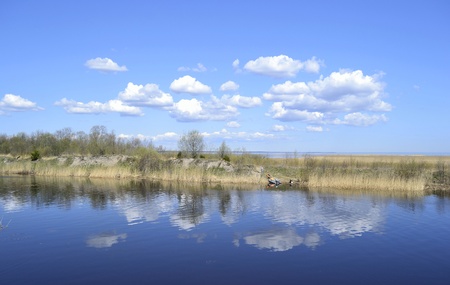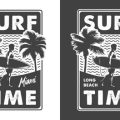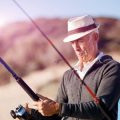1. Understanding Walleye Behavior Across Regions
When it comes to trolling for walleye across the Great Lakes and the Midwest, understanding how these fish behave throughout the year is key. Walleye are known for their seasonal movements, and if you can match your trolling strategy to their behavior, your chances of landing a limit go way up.
Seasonal Patterns That Impact Trolling
Walleye don’t just hang out in one spot all year. Their location and activity levels shift depending on water temperature, spawning cycles, and food availability. Here’s a quick look at how walleye typically behave throughout the seasons:
| Season | Behavior | Trolling Strategy |
|---|---|---|
| Spring (Post-Spawn) | Move from shallow spawning areas to deeper water; hungry and active | Troll near drop-offs with crankbaits or stickbaits at moderate speeds |
| Summer | Head to deeper, cooler waters; spread out over structure and flats | Use bottom bouncers with spinner rigs; increase trolling speed slightly |
| Fall | Migrate toward shallower areas again; feeding heavily before winter | Troll along weed edges or rocky points using crankbaits at slower speeds |
| Winter | Largely inactive; minimal movement under ice | Trolling not effective—switch to jigging through ice if targeting walleye |
The Great Lakes vs. Inland Midwest Waters
The size and depth of the water body make a big difference in how walleye behave. In the Great Lakes—especially Lake Erie and Lake Michigan—walleye often migrate long distances. Meanwhile, in inland lakes and rivers across states like Minnesota, Wisconsin, and Iowa, their movement is more localized but still seasonal.
The Great Lakes Walleye Behavior
- Migratory: Travel dozens of miles between spring spawning areas and summer feeding grounds.
- Sensitive to baitfish: Will follow schools of shad or smelt into open water.
- Affected by currents: Especially in connecting channels like Detroit River or St. Clair River.
The Midwest Inland Walleye Behavior
- Structure-oriented: Prefer drop-offs, humps, weed lines, and submerged timber.
- Lesser migration: Movement is mostly based on depth changes due to temperature shifts.
- Easier patterning: Fish tend to stay within certain zones once located.
Tying It Together for Better Trolling Results
If you know where walleye are likely to be during each season—and understand the differences between large lakes and smaller bodies—you can tailor your trolling setup accordingly. That means choosing the right lures, speeds, depths, and locations for the time of year and type of water youre fishing.
This regional knowledge isn’t just helpful—it’s essential if you want consistent success while trolling for walleye from spring through fall in America’s top fishing waters.
2. Trolling Gear and Boat Setup for Success
If youre serious about trolling for walleye, having the right gear and boat setup can make all the difference. Whether youre fishing in the vast waters of Lake Erie or working the smaller inland lakes of Minnesota, your trolling system needs to be dialed in. Let’s break down the must-have gear for effective walleye trolling.
Rods Built for Trolling
When it comes to trolling rods, youre looking for length and flexibility. A good trolling rod typically runs between 76″ and 10. Longer rods help with spreading your lines when using planer boards and provide better shock absorption during the fight.
| Rod Length | Best Use |
|---|---|
| 76″ – 8 | Ideal for inline weights and flatlining |
| 86″ – 10 | Great for planer board setups and lead core line |
Line Counters: Precision Matters
A line counter reel is essential for consistent trolling. Knowing exactly how much line you have out helps you replicate successful passes and reach specific depths where walleye are holding.
Recommended Line Counter Reels:
- Daiwa Accudepth Plus
- Okuma Cold Water Line Counter
- Shimano Tekota LC
Planer Boards: Spread Out Your Spread
Planer boards allow you to fish multiple lines at once without tangling, covering more water horizontally. They’re especially useful on large bodies like Lake Michigan or Lake Erie where walleyes roam wide open spaces.
Top Planer Board Brands:
- Off Shore Tackle OR12 (Great Lakes favorite)
- Church Tackle TX-22
- Zebco/Yellow Bird boards (Budget-friendly)
Sonar & Electronics Setup
A quality sonar unit helps you locate fish and structure. Look for units with GPS, side imaging, and depth mapping features. Combining sonar with a GPS chartplotter allows you to mark productive zones and follow contour lines accurately.
Key Sonar Features to Look For:
- Sidescan Imaging: Spot baitfish schools and fish-holding structure off to the sides of your boat.
- Down Imaging: Get a clear picture of what’s directly beneath you.
- GPS Mapping: Follow depth contours or plot trolling paths with precision.
Trolling Setup by Water Body Type
| Water Body Type | Main Gear Focus | Trolling Strategy Tip |
|---|---|---|
| The Great Lakes (e.g., Erie, Huron) | Planer boards, long rods, lead core line, advanced sonar | Troll deep basins using crankbaits like Reef Runners or Bandits at 1.5–2.5 mph |
| Larger Inland Lakes (e.g., Mille Lacs) | Bounce bottom with snap weights, use live bait rigs, medium-length rods | Troll along drop-offs and weed edges in 15–25 ft of water |
| Smaller Midwest Lakes & Rivers | Straight-line trolling with shorter rods, basic sonar, mono or braided line | Troll upstream or downstream slowly (1–1.8 mph) using shallow-diving crankbaits or crawler harnesses |
No matter where youre fishing, dialing in your trolling gear and electronics will give you a big edge when chasing walleye. Matching your setup to the water conditions not only helps you catch more fish—it makes each trip more fun and productive.

3. Proven Trolling Techniques and Speeds
When it comes to trolling for walleye across the Great Lakes and Midwest, success often comes down to three key factors: speed, depth, and lure selection. Let’s break down how seasoned anglers adjust these elements based on water conditions, seasons, and fish behavior.
Trolling Speeds That Trigger Strikes
Walleye can be picky about presentation speed. In general, slower speeds work better in colder water or early in the season, while faster speeds are more effective during summer when walleyes are more active.
| Water Temperature | Recommended Trolling Speed (MPH) |
|---|---|
| 40–50°F (Spring) | 0.8 – 1.2 |
| 50–65°F (Early Summer) | 1.2 – 1.8 |
| 65–75°F (Mid to Late Summer) | 1.8 – 2.5 |
| Below 40°F or Above 75°F | 0.7 – 1.5 (slow presentations work best) |
Dialing in the Right Depths
The depth you troll at is just as important as your speed. Walleyes are known to relate closely to structure and thermoclines. Using lead core line, snap weights, or downriggers can help get your lure into the strike zone.
| Season | Common Walleye Depth Range |
|---|---|
| Spring | 10–20 feet |
| Early Summer | 15–30 feet |
| Midsummer to Fall | 25–45+ feet |
Lure Types That Work Across Conditions
The type of lure you use should reflect both the conditions and the activity level of the fish. Crankbaits are a go-to choice across many regions, but there are times when spinners or stickbaits outperform them—especially when paired with live bait like nightcrawlers or minnows.
| Lure Type | Best Conditions | Notes |
|---|---|---|
| Crankbaits (e.g., Flicker Shad, Reef Runner) | Midsummer, stained water, aggressive fish | Tune lures regularly for proper action; ideal for covering ground fast. |
| Spoon-style lures | Clear water, deep summer bites | Bounce off bottom contours or run behind a dipsy diver for depth control. |
| Crawler harnesses with spinner blades | Mild temps, post-spawn periods, pressured waters | Add a bottom bouncer or inline weight to reach target depth; great for finicky fish. |
| Stickbaits (e.g., Husky Jerk) | Nights, early spring/fall, cold fronts | Suspend well; excellent for slow trolling and high visibility situations. |
Trolling Tips from Local Anglers:
- If youre marking fish but not catching them, vary your trolling speed by doing “S” turns—this changes lure speed and direction naturally.
- Troll with the wind rather than against it when possible; it helps keep your presentation smooth and consistent.
- Purple, chartreuse, firetiger, and natural shad patterns consistently produce in both clear and stained waters across the Great Lakes states.
- Avoid overloading with too much gear—sometimes a single rod dialed in perfectly will outfish a spread of four poorly-tuned setups.
Tuning your trolling approach to match seasonal patterns and local conditions is what separates occasional bites from full coolers. Use this info as a guide next time you hit the water in Michigan’s Saginaw Bay, Wisconsin’s Green Bay, Minnesota’s Mille Lacs Lake—or any other top Midwest walleye destination.
4. Hotspots and Seasonal Timing
Knowing where and when to troll for walleye can make all the difference between a slow day on the water and a cooler full of fish. Across the Great Lakes and Midwest, certain lakes, rivers, and bays shine during specific times of the year. Heres a guide to help you hit the right spot at the right time.
Spring (March – May)
As ice melts and waters begin to warm, walleye move into shallower areas to spawn. This is prime time to target them in rivers and near river mouths.
| Location | State | Why It’s Hot |
|---|---|---|
| Detroit River | Michigan | Massive spring walleye run from Lake Erie |
| Mississippi River Pools 9-13 | Iowa/Wisconsin/Minnesota | Consistent early-season action in backwaters and current breaks |
| Maumee River | Ohio | Famous for its shoulder-to-shoulder spring walleye run |
Summer (June – August)
When temperatures rise, walleyes move deeper. Trolling becomes especially effective across large bodies of water where fish spread out.
| Location | State | Tactic Tip |
|---|---|---|
| Lake Erie Western Basin | Ohio/Michigan | Troll crankbaits or harnesses along reefs and drop-offs |
| Mille Lacs Lake | Minnesota | Troll off mud flats with spinners and bottom bouncers |
| Saginaw Bay | Michigan | Trolling crawler harnesses along contour lines is key |
Fall (September – November)
This is a transition period when walleye feed aggressively before winter. Look for them near structure and migrating baitfish schools.
| Location | State | Main Strategy |
|---|---|---|
| Green Bay (Lake Michigan) | Wisconsin | Troll crankbaits along rocky shorelines and points during low light hours |
| Lakes Sakakawea & Oahe | North Dakota/South Dakota | Trolling deep basins with leadcore line as fish suspend over depth changes |
| Petenwell Flowage | Wisconsin | A great fall trolling spot with less pressure than bigger lakes |
Winter (December – February)
Trolling slows down in frozen regions, but southern reservoirs or tailraces below dams can still offer open-water opportunities.
| Location | State | Winter Advantage |
|---|---|---|
| Tennessee River below Pickwick Dam | Tennessee/Alabama border | Mild winters allow consistent trolling bite near dam discharge areas |
| Norfork Lake & Bull Shoals Lake | Arkansas/Missouri border | Milder climate keeps portions open year-round for trolling deeper channels and ledges |
Trolling Tips by Season:
- Spring: Target current seams and spawning flats with slow presentations.
- Summer: Use electronics to locate schools in deeper water; speed up your troll.
- Fall: Focus on baitfish movement; use aggressive cranks in cooler temps.
- Winter: Head south or fish tailwaters; troll slowly with deep-diving lures if conditions allow.
The Bottom Line on Timing Your Trolling Trip:
No matter the season, there’s always somewhere biting if you know where to look. Matching your location and tactics to the time of year will help stack the odds in your favor. The Great Lakes and Midwest offer year-round opportunities for trophy-class walleye—just be sure youre there when they are.
5. Local Tips and Regional Insights
When it comes to trolling for walleye, no two lakes are exactly the same. Anglers from different parts of the Great Lakes and Midwest have developed unique techniques tailored to their home waters. Here’s a breakdown of how trolling strategies can vary between Lake Erie, Lake Michigan, and inland Midwestern lakes, based on local knowledge passed down through generations.
Lake Erie: Speed and Spreads
Lake Erie is known for its abundant walleye population, especially during spring and early summer. Locals here often recommend faster trolling speeds—between 1.8 to 2.5 mph—especially when targeting suspended fish in open water. Inline planer boards are a must, helping spread lines wide and cover more water.
Top Tips from Erie Anglers:
- Use deep-diving crankbaits like Reef Runners or Bandits
- Color matters—purple, chartreuse, and firetiger are favorites
- Troll with the wind for more natural lure action
Lake Michigan: Clear Water Precision
In Lake Michigan, water clarity plays a big role in how you troll for walleye. Because of the clear conditions, locals often recommend using longer leaders and lighter fluorocarbon lines to avoid spooking fish.
Lake Michigan Techniques:
- Stick with natural-colored baits like silver or white
- Troll slower—around 1.0 to 1.5 mph—to match baitfish behavior
- Target structure near shorelines or river mouths during low light hours
Midwest Inland Lakes: Adaptability is Key
Inland lakes across states like Minnesota, Wisconsin, and Iowa require a flexible approach. These smaller bodies of water can change quickly with weather patterns and boat pressure.
Local Advice for Inland Waters:
- Use bottom bouncers with crawler harnesses in summer months
- Focus on weed edges and drop-offs where walleyes ambush prey
- Trolling speed should range from 0.8 to 1.4 mph depending on season
Regional Trolling Comparison Table:
| Region | Trolling Speed (mph) | Popular Baits | Key Tactic |
|---|---|---|---|
| Lake Erie | 1.8 – 2.5 | Reef Runners, Bandits | Suspend baits with inline boards |
| Lake Michigan | 1.0 – 1.5 | Silver shad-style cranks | Long leaders, clear water tactics |
| Inland Lakes (Midwest) | 0.8 – 1.4 | Crawler harnesses, bottom bouncers | Focus on structure & seasonal shifts |
No matter where you’re fishing, listening to local anglers at the dock or bait shop can give you an edge. Their experience often reveals subtle details that make all the difference when trolling for walleye across different regions.


